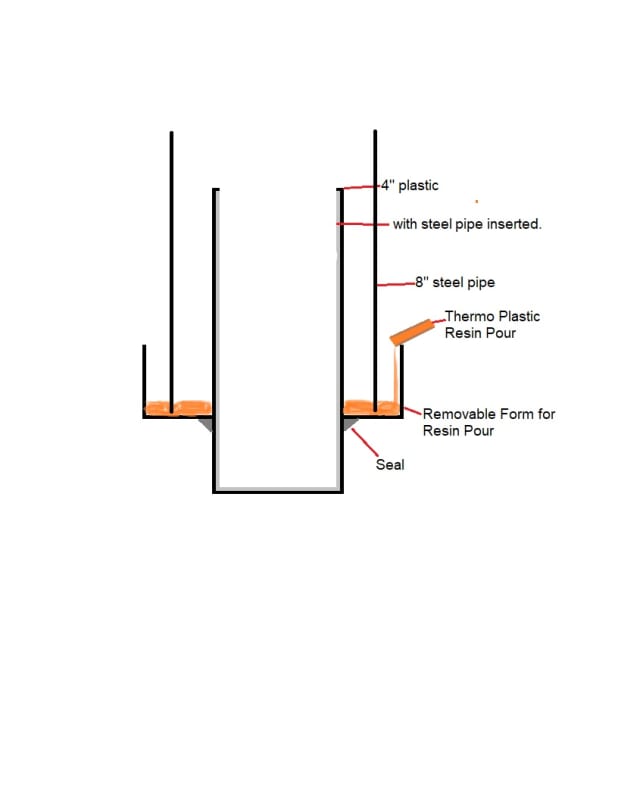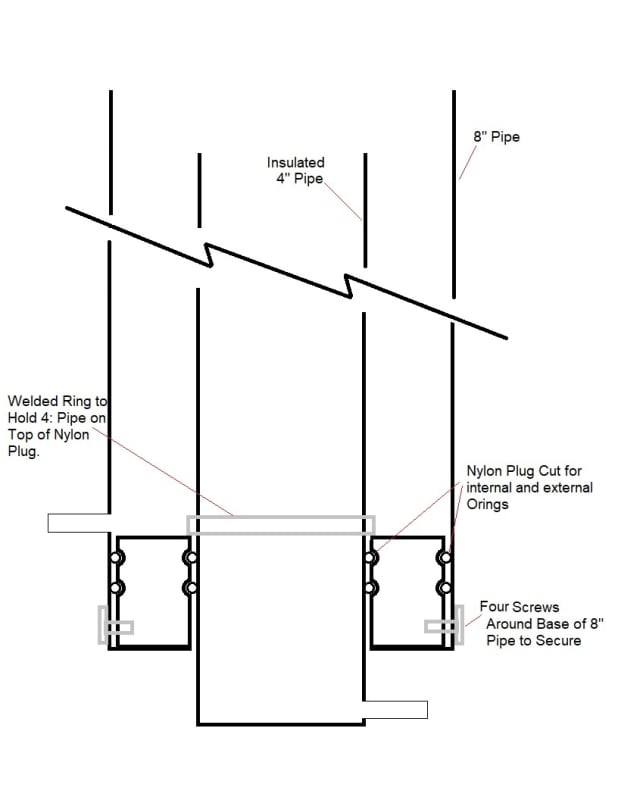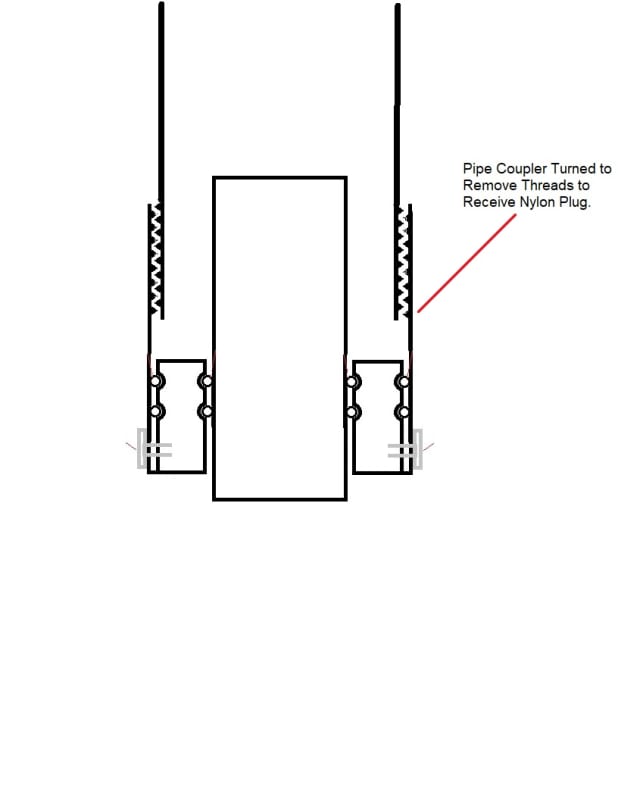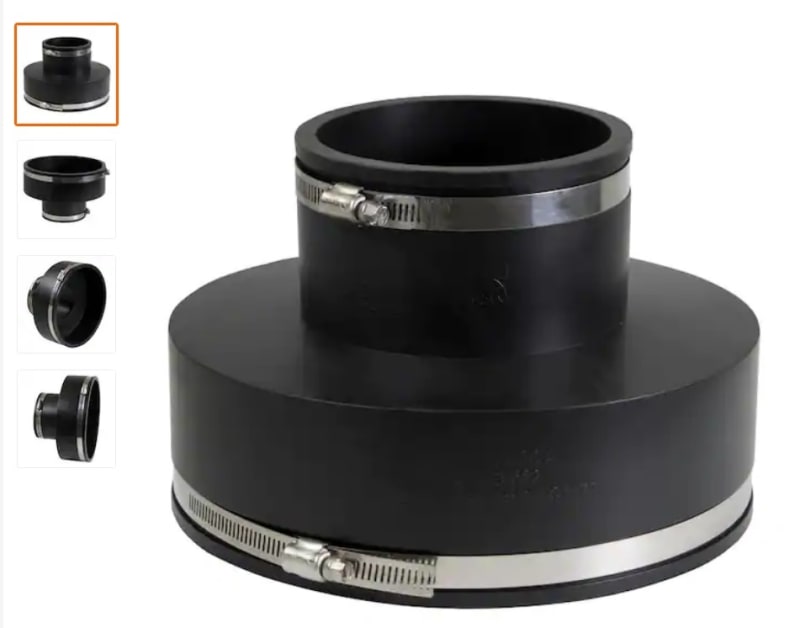I have as an example, an 8" pipe 6 feet tall, I want an inner 4" plastic pipe down the center with the plastic pipe out the bottom of the steel pipe.
There will be a another steel pipe inside the plastic pipe. The seal must be electrically insulated for High Voltage. (10kV?) I'm using the generic plastic, because whatever the tube is, it has to hold up to oils and 90*C heat, PVC won't work. The only pressure is gravity, so less than 3 PSI on the seal. I have a drawing to help understand what I want.
Thanks, Mikek

There will be a another steel pipe inside the plastic pipe. The seal must be electrically insulated for High Voltage. (10kV?) I'm using the generic plastic, because whatever the tube is, it has to hold up to oils and 90*C heat, PVC won't work. The only pressure is gravity, so less than 3 PSI on the seal. I have a drawing to help understand what I want.
Thanks, Mikek





